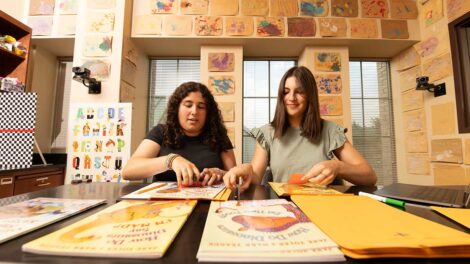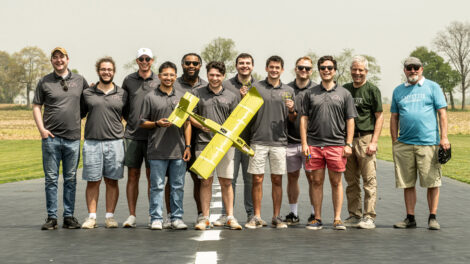Studying the KLF17 gene to better understand stem cells
By Stella Katsipoutis-Varkanis
Assistant Professor of Biology Ezra Lencer and three student-researchers have hit the lab this summer to investigate one of biology’s most burning questions: How do stem cells acquire different fates? “All humans start as one cell that divides into multiple cells that express different genes,” Lencer says. In their lab, the team is specifically looking at a newly discovered (and not widely researched) gene called KLF17, which Lencer says “could potentially be playing an important, yet unidentified, role in the development of neural crest cells, which make the skeleton of our face.”
Video by Olivia Giralico and Alfred Greenbaum
Over the course of the project, Lencer and Bergh Family Fellows Emma Dinolfo ’27, Sophia Guitar ’25, and Hazel Yang ’27 have been using CRISPR technology to selectively modify KLF17 in zebrafish and study how it affects the fishes’ development. “This has all sorts of implications for biomedicine,” Lencer says. “It could give us insight into a variety of hereditary diseases in humans—like cleft lip and palate, melanoma, and Hirschsprung’s disease—and potentially some kind of remedy somewhere down the road.”
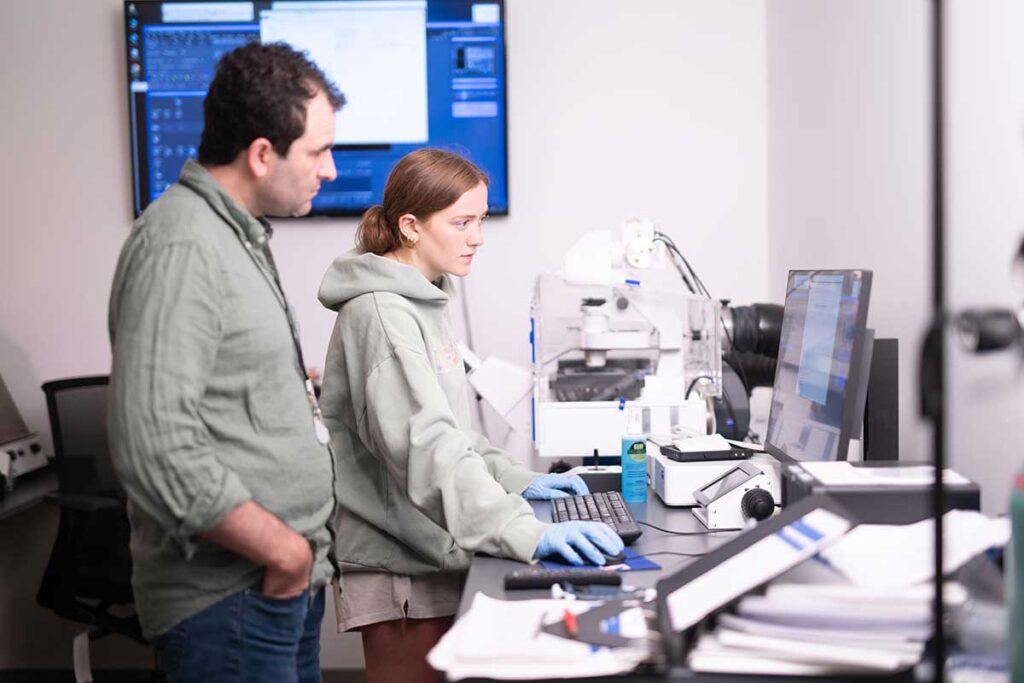
Through their research, Prof. Ezra Lencer (left) and Sophia Guitar ’25 (right) hope to gain a better understanding of the potential role of the KLF17 gene in stem cell fate. | Photo by Adam Atkinson
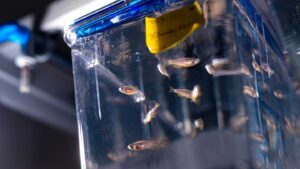
Photo by Adam Atkinson
The study also has been an opportunity for the student-researchers to fully engage in every aspect of biological research. From raising zebrafish to using a laser scanning confocal microscope to edit genes, they’re gaining firsthand experience in running lab experiments—experience that Lencer says is something students “just don’t get in the classroom.” Guitar, a neuroscience major, says the independence she and her peers are given in the lab allows them to make the project their own: “I’m able to ask my own questions and suggest new directions that we can take the study, which is really exciting. And Prof. Lencer is always there to offer his support so I can achieve the goals I want.”
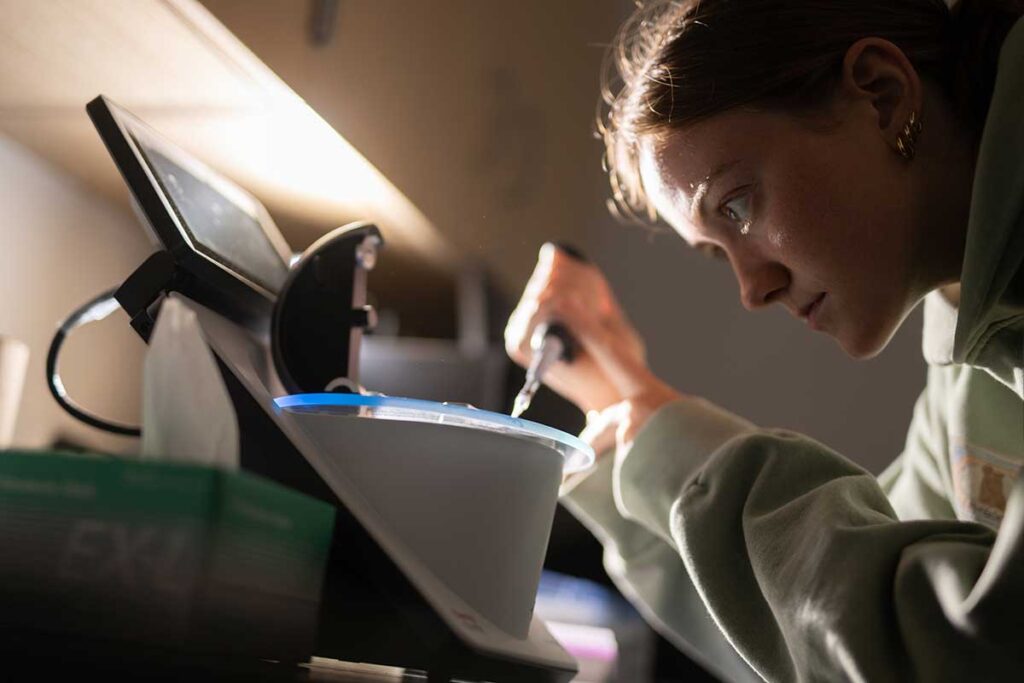
Photo by Adam Atkinson
This gives student-researchers a head start on graduate-level work that will benefit them no matter what career field they ultimately choose to follow—an opportunity that, Lencer says, is unique to the Lafayette experience. “At the College, we have access to all of these tools that enable us to do this amazing cutting-edge research,” he says, “and the training students get through funding from programs like Bergh Family Fellows is just phenomenal.”
“The experience has opened a lot of doors for me and prepared me for my future in a lot of ways,” adds Guitar, who plans to continue working in the research sphere after graduating from Lafayette. “The skills I’ve learned in the lab setting are invaluable.”
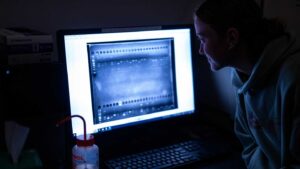
Photo by Adam Atkinson
As for the future of the project, which will continue through the 2024-25 academic year, Lencer and his team are excited to gain even deeper knowledge about KLF17: “Our next hopes are to understand whether or not we’re seeing defects in the neural crest cells [as a result of modifying KLF17],” he says. “And in the future, we’re looking forward to understanding how this one gene works with a larger network of genes to regulate development—and evolve new traits that create our own evolutionary history.”
